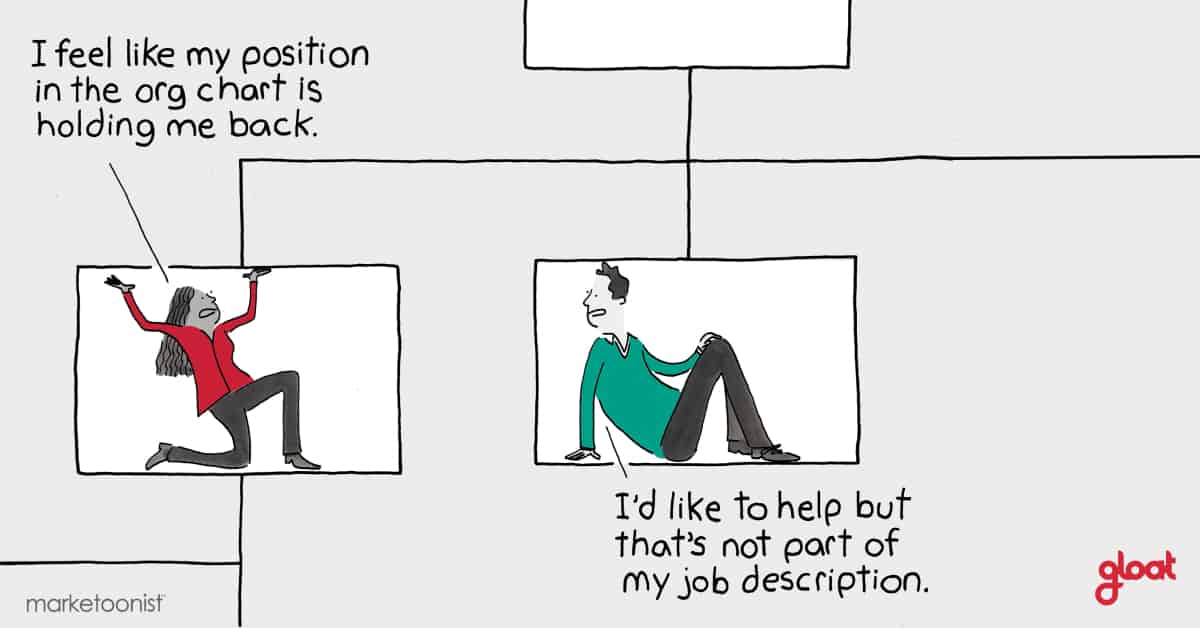4 Reasons it’s time to rethink the role of the org chart
How to give workforce management tools a much-needed upgrade

When it comes to talent management, the organizational chart is an enduring favorite. The diagrams visually convey a company’s internal structure by detailing the roles, responsibilities, and relationships between employees within an organization. They create a reporting structure that holds people accountable and ensures everyone has a manager.
Yet, while org charts are a handy tool for learning how a business functions, they no longer tell the whole story. Since the pace of change is accelerating and businesses are deconstructing jobs into tasks to unlock greater agility, talent management can no longer be summed up in one neat picture.
Too often, leaders use org charts to define who can contribute to which projects and make assumptions about what skills a person might have based on their current role. But now that work is getting unboxed from jobs, it might be time to rethink the org chart’s role to make room for a more dynamic talent management strategy.
Inside the org chart: what they do and the purpose they serve
For decades, org charts have been a dominant workforce management tool. They graphically lay out an organization’s structure, highlighting the different jobs, departments, and responsibilities that connect the company’s employees to each other and to the broader management lines. Most org charts are structured using a hierarchical model, which shows management or other high-ranking officials on top, and lower-level employees beneath them.
When work was predictable and enterprises were vying for scalable efficiency, org charts made a lot of sense. Rigid hierarchies worked well since most tasks were familiar and disruption was the exception, rather than the norm. But now that quick pivots and speed to market will make or break a business’s success, the responsibilities that your people perform can’t always be captured in a single picture.
4 Reasons why org charts can’t be your everything
Need more proof that it’s time to rethink your org chart? Here are a few reasons why the org chart’s role should be reimagined in the new world of work:
#1. Org charts hinder cross-functional collaboration
Org charts divide your complex workforce into neat boxes. They spell out who reports to whom and segment your organization into departments and teams. But they don’t paint the whole picture. They don’t factor in past experience or personal skills and interests.
As a result, org charts don’t do much for cross-functional collaboration. In the new world of work, different teams need to come together to devise innovative solutions and get key projects across the finish line. And that’s something that an org chart won’t be able to illustrate or help you facilitate.
#2. Workforce pixelation is gaining speed
Workforce pixelation is going mainstream. Leading enterprises like GE and IBM have announced plans to break up their businesses into smaller units in recent months. And internally, workforces are doing the same thing by deconstructing jobs into tasks to unlock agility and accelerate response times.
As more businesses get behind the pixelated movement, traditional jobs structures will shift to more dynamic models that enable talent to flow freely across the organization. As this happens, org charts will become less useful because employees’ roles will no longer be confined to a single team or department.
#3. Organizational charts don’t convey people’s full potential
Org charts might tell you what department an employee works in, but they don’t capture the full range of their skills. They can’t portray who has the expertise that another team might need to tap into when knowledge gaps emerge.
Org charts also leave out employees’ ambitions and long-term goals. While some people might be interested in staying in the same function, others are going to want to take their professional progression in a new direction. And even within the same team, there will be employees who might be better suited to a different path, depending on their interests and goals. Without skills visibility and an understanding of an employee’s aspirations, leaders won’t have all the insights they need to make strategic talent management decisions.
#4. Org charts can slow response times
Org charts portray rigid hierarchies, which are a sure-fire way to create silos. When employees only work with colleagues in their department, knowledge that could benefit your entire organization remains trapped within a single team. And without these crucial insights, response times will slow as employees struggle to fill in the gaps.
If the org chart is getting reimagined, what’s next?
The organizational chart may never be rendered entirely obsolete. They’re an easy way to understand how an organization is structured, from the most high-level view. And there are a few instances where this at-a-glance depiction might be enough information. But for most workforce planning decisions, leaders are going to need a fuller picture.
Consequently, org charts can no longer be your dominant source of truth for talent management. And it’s time to say goodbye to disparate data that can’t keep up with the pace of change. In today’s world of work, leaders need new tools that can evolve and adapt in real-time, as challenges arise and priorities emerge. And that’s where talent marketplaces come into play.
These platforms make it easy to dynamically match employees to relevant opportunities that align with their skills, experiences, and long-term goals. New talent marketplace offerings like job architecture and skills management consoles take it one step further by providing real-time insights powered by data from the platform, making them incredibly relevant and up to date.
The role of the org chart is getting a much-needed upgrade, no doubt about it. But this is but one of the mindset shifts that leaders need to make to adapt to today’s work transformation. To learn more about the tools and frameworks that will move the needle, check out Unilever’s case study, which shows what one leading organization is doing to prepare for the future of work.




